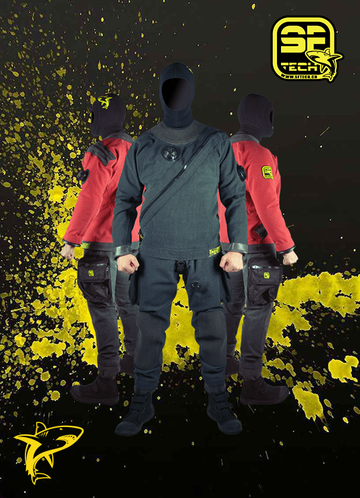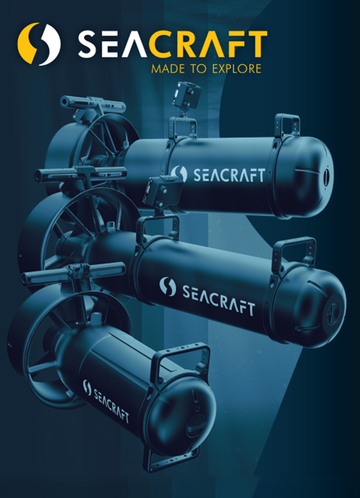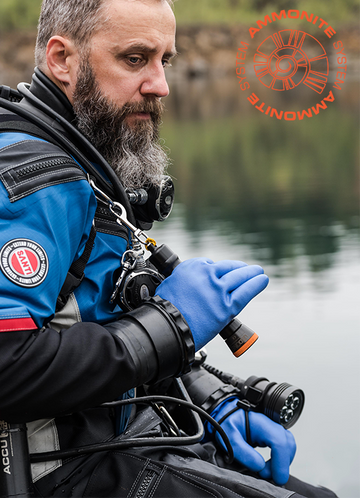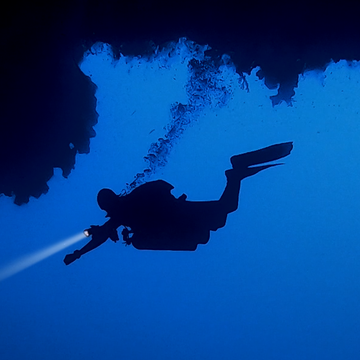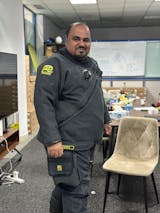In the world of technical diving, few subjects ignite as much debate — or emotion — as deep air diving. In the early years of technical diving, deep air diving was often regarded as a mark of capability, toughness, or exceptional skill, now it is understood as something far more sobering: a practice that repeatedly places divers into preventable danger. With the benefit of modern research, accident analysis, and evolving standards, this perspective has fundamentally changed. Today, deep air diving is understood not as an achievement, but as an unnecessary exposure to avoidable physiological hazards. The discussion is no longer philosophical or opinion-based — it is rooted in clear scientific realities that experience, confidence, or training cannot overcome.
Nitrogen Narcosis: A Chemical Limitation, Not a Psychological Challenge
When breathing compressed air beyond 30 meters (in some individuals even shallower), divers begin to experience the escalating effects of nitrogen narcosis — a narcotic influence caused by increased partial pressure of nitrogen at depth. The onset is subtle and narcosis can feel harmless, even pleasant: mild euphoria, emotional ease, warmth, confidence, a sense that everything is “fine.”
But this is the danger.
As depth increases, that gentle buzz becomes significant cognitive and motor impairment. Thinking slows, situational awareness numbs, task loading escalates, logical reasoning collapses, decision-making is being harder and response time longer. Your judgment becomes skewed, while overconfidence climbs. You feel capable — while you are, in fact, becoming increasingly incapable.
One of the greatest hazards lies in the diver’s inability to recognize the decline in performance while it is occurring. A dive may appear uneventful until the moment an unforeseen complication arises. At that point, a diver operating with impaired cognitive function is far less capable of resolving the situation effectively. The moment something does go wrong — a failure, a lost reference, a current, a separation — your brain is no longer equipped to respond with clarity or speed. Deep air does not kill when things go well. It kills when things go badly.
Narcosis is a physiological fact, not a mental obstacle that can be “overcome” through strength, discipline, or familiarity. No diver can train their brain to resist the chemical effects of nitrogen under pressure.
Gas Density: The Other Invisible Threat
While narcosis clouds the mind, another villain attacks the body: gas density. As air becomes denser with depth, breathing effort increases dramatically. Dense gas elevates work of breathing, leading to CO₂ retention — which is itself narcotic and can magnify confusion, panic, or loss of consciousness.
A simple analogy illustrates the point clearly:
- Breathing helium-based gas at depth is like drinking water through a straw — light and effortless.
- Breathing deep air at depth is like trying to drink a thick milkshake through a straw — slow, resistive, and exhausting.
At depth, every breath on dense gas becomes a struggle. Work harder to breathe, retain more CO₂. Retain more CO₂, and you become more narked. Become more narked, and you lose awareness that you are in danger at all. This is how divers slip past the point of control without noticing.
Many serious technical diving incidents attributed to “panic,” “loss of control,” or “sudden irrational behavior” are now understood to be directly related to CO₂ retention in combination with narcosis
Why Do Some Divers Still Choose Deep Air?
Today we know more — modern training, incident analyses and dive-medicine research make the risks clear. So why do some divers still use deep air (high-pressure nitrogen) for technical depths instead of helium-containing mixes?
Helium-based mixes (for example, trimix or heliox) transformed technical diving because helium provides several important, well-documented advantages:
-
Minimal inert-gas narcosis. Helium has very low narcotic potency compared with nitrogen and, in practice, has not been shown to produce clinically relevant inert-gas narcosis at depths divers commonly operate. This preserves cognitive function and situational awareness at depth.
-
Lower gas density. Helium is much less dense than nitrogen at pressure, which lowers the work of breathing and reduces the risk of CO₂ retention — an important contributor to cognitive impairment and to potentiating narcosis.
-
Cleaner cognitive performance. By removing most of the narcotic burden carried by nitrogen, helium-rich mixes reduce the likelihood of confusion, slowed decision-making and poor task performance in stressful or complex situations.
Despite these significant benefits, one major factor continues to influence diver decision-making: cost. The price of helium, particularly for open-circuit divers and large-volume dives, can be substantial. Some begin to rationalize: “I’ve done this before,” “The site is easy,” “I know my limits,” or the most dangerous of all, “Nothing ever happens.” This false confidence is a common driving factor when opting for air for technical dives.
However, from a risk-management perspective, cost should never be a deciding factor in gas selection. Diving is an environment where consequences are unforgiving, and helium is not a luxury — it is a safety requirement when operating at depth.
History, Ego, and the Myth of the “Deep Air Super Diver”
In earlier eras of technical diving, deep air was normalized. Divers who pushed limits were celebrated. But accident analyses over decades reveal a consistent, painful pattern: high skill does not prevent deep air fatalities. Many victims were not beginners. They were highly experienced, confident, and respected.
Over time, the community matured. We learned — sometimes through tragedy — that bravery, discipline, and skill are meaningless if your brain is chemically prevented from thinking clearly when it matters most.
True mastery is not pushing into impairment. It is avoiding it entirely.
The Modern Philosophy
Today, the standard in progressive technical diving is clear:
- Use helium to maintain a clear mind.
- Use leaner, lighter gases to control CO₂.
- Remove impairment from the equation, instead of pretending to out-swim it.
Technical diving already contains enough risk. There is no honor in adding more.
Final Thought: The Ocean Rewards Respect, Not Recklessness
Deep air diving is neither necessary nor defensible within modern technical diving. Its dangers stem not from dramatic, obvious failures, but from subtle, progressive impairments that leave divers least capable at the moment they most need clear judgment.
Helium offers clarity, safety, and control. You can think. You can solve problems. You can come home.
In the end, the goal is not to be the toughest diver — it is to be the safest one who lives to dive again.
